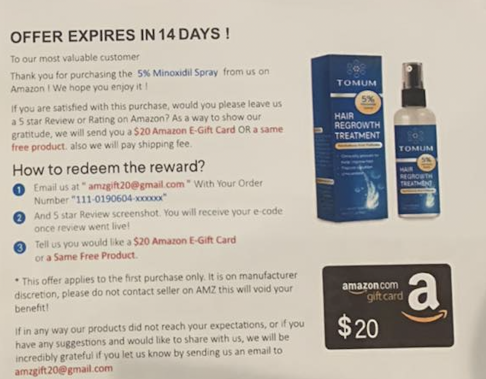Fake reviews are a blemish on Amazon’s nearly untarnished reputation. The leading online retailer accounted for 37.8% of the American market in June 2022. In addition to more than 200 Prime subscribers, there are 6.3 million FFA and third-party sellers (1.5 million active). While 6.3 million sellers are beneficial to Amazon and its Prime members, the same does not reign true for sellers.
The Amazon Marketplace is oversaturated with sellers promoting the same or similar products. Even active members are reporting lower sales due to their ever-increasing number of competitors. More than 600 sellers, unfortunately, took matters into their own hands. While against Amazon Marketplace policies, “review manipulation” offered the competitive edge these sellers so desired and needed to make sales.
Honorable sellers believed Amazon turned a blind eye to manipulated reviews for years. In 2020, Amazon Fakepost, a detection service for fake reviews, detected 720 million bogus reviews. 10,000 Facebook groups were named in a lawsuit filed by the retail giant in July 2022.
Amazon Bans 600+ Sellers
Review manipulation resulted in the banning of 600 seller accounts. The ban only encouraged the impacted accountholders to strategize new methods of manipulation, such as opening new seller accounts and sending postcards to Amazon Prime members.

Product review manipulation does not just impact Amazon customers but also sellers that heed the marketplace regulations. It is also harmful to brands like Nike, Dior, Chanel, Craftsman, Samsung, Pampers, Gucci, L’Oreal, Gillette, and more.
- Acquired stealth accounts from black hat services
- Collected customer’s information (address and name)
- Developed new brands from unbranded Chinese products
- Created multiple seller accounts
- “Request a Review” feature stays inactive to avoid negative customer reviews
- Offered customers partial refunds to avoid negative reviews
- Sent postcards to customers via snail mail, offering cash for positive reviews
Individual Sellers, Not Companies
Amazon’s selling partners are mostly comprised of individual sellers, not commercial establishments. In fact, Review manipulation and counterfeit products have been harmful to dozens of brands, including Ikea, Birkenstock, Ralph Lauren, PopSockets, Buy.com, Gap, Macy’s, and Nike. To fight back, the impacted companies pulled their products from the Amazon Marketplace.

Amazon Deletes Millions Of Fraudulent Product Reviews
As part of Amazon’s crackdown, millions of fraudulent product reviews were deleted. The bogus reviews disappeared from the marketplace but not the fake product ratings. Amazon permitted the offenders (sellers manipulating reviews) to keep their 4- and 5-star ratings. With all the fraud reviews gone, Prime members have no idea how the products received such high ratings.
An Ongoing Problem
Although Amazon has addressed the problem, it hasn’t done enough just yet. Some brands are still partaking in this scheme to boost product ratings and sales. The “DAVV” brand on Amazon and others are still offering gift cards for 4.6-star rating. Reviewers on Amazon mention that these brands offered reviews for gift cards.
- DAVV Minoxidil
- Tomum Minoxidil
Both of the above-mentioned sellers are selling 5% Minoxidil in a spray formula. Tomum has a 4.8-star rating.

Afterword
Some consumers believe Amazon’s fight against review manipulation came a little too late. Deleting fake reviews while leaving fake product ratings intact may not be the answer. Are the intact fraudulent ratings Amazon’s way of avoiding lost sales while enticing customers to buy the questionable products?
The Amazon Marketplace is one of the most competitive. The more new seller accounts are approved, the odds of making sales decrease. The key to being a successful Amazon seller is unique, high-demand products. In the meantime, sellers and Prime members can only hope the retailer’s review manipulation strategy is effective.










